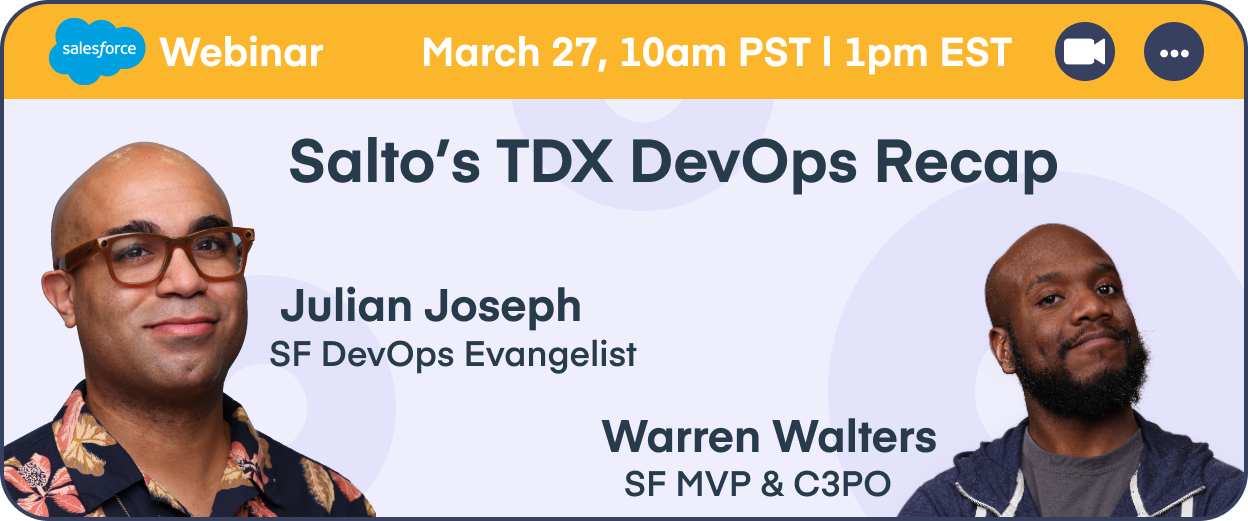Salto for
Salesforce
Articles
SHARE
3 Best Practices for Salesforce Impact Analysis
Pablo Gonzalez
March 28, 2022
3
min read

Impact analysis is the ability to see the potential impact of a change in your Salesforce metadata. For example:
- What could break if I rename this picklist value?
- Would some business processes be affected if we change the sender email address in this workflow?
Traditionally, impact analysis is done in Salesforce using the "Where is this used" button on custom fields, but that's hardly enough.
This article will list some best practices for conducting an impactful impact analysis (pun intended).
Figure out exactly how and where the fields are being used
The "where is this used" feature in Salesforce will only show you the name of the metadata where a field is used, but it won't tell you exactly where within that metadata:

Here, I can see that the field is being used in many flows. But exactly where in those flows? In screen elements? Decision elements? Fast updates? The only way to know is to open the flow and inspect all the elements one by one.
A good impact analysis should reveal the exact location of the reference because this completely changes how potential impact of a change. For example, a flow could read data from a field or insert data into a field.
With Salto, we can tell you the exact location of the field within the flow's metadata:

In the above example, I can see the field is used in 3 different elements within the flow.When it comes to apex classes, you can even see a preview of where the field is used without going through the entire code.
.jpeg)
Don't forget about hardcoded user or profile IDs
It's a pretty common (yet really bad!) practice to hardcode user or profile IDs in your metadata. This is often used in apex code or validation rules to define conditions that only apply to certain users or profiles.
While the practice is wrong, a good impact analysis should also reveal where these hardcoded IDs are; so you can get rid of them!
With Salto, it's super easy to find these IDs, regardless of where they are in your metadata. All you have to do is a simple text search:

Concepts can be used too
So far, we've talked about metadata being referenced in your Salesforce configuration. But what about ideas or concepts?
This may sound weird, but it's common for an entire idea or concept to be used across the org.
Let's say that your organization has the concept of an account record being "GDPR ready." This concept is used everywhere: in your contracts, in apex here and there, in your page layouts, in your community, etc.
So this is not necessarily a field, but more of an idea.
Sometimes, you also need to make changes to these concepts. For example, you may want to change this concept to an account being "compliant" instead of "GDPR Ready." You need to be able to find where this concept is present in the org.
With Salto, a simple text search reveals all the configuration that uses this concept:
.jpeg)
Conclusion
Now you know that impact analysis is more than simply finding where fields are being used. You need an approach to find any type of reference, be it hardcoded IDs, metadata names, or even concepts and ideas.
What’s next?
Knuckles has suggestions

Salto for
Salesforce
Salesforce
SHARE
3 Best Practices for Salesforce Impact Analysis
Pablo Gonzalez
March 28, 2022
3
min read

Impact analysis is the ability to see the potential impact of a change in your Salesforce metadata. For example:
- What could break if I rename this picklist value?
- Would some business processes be affected if we change the sender email address in this workflow?
Traditionally, impact analysis is done in Salesforce using the "Where is this used" button on custom fields, but that's hardly enough.
This article will list some best practices for conducting an impactful impact analysis (pun intended).
Figure out exactly how and where the fields are being used
The "where is this used" feature in Salesforce will only show you the name of the metadata where a field is used, but it won't tell you exactly where within that metadata:

Here, I can see that the field is being used in many flows. But exactly where in those flows? In screen elements? Decision elements? Fast updates? The only way to know is to open the flow and inspect all the elements one by one.
A good impact analysis should reveal the exact location of the reference because this completely changes how potential impact of a change. For example, a flow could read data from a field or insert data into a field.
With Salto, we can tell you the exact location of the field within the flow's metadata:

In the above example, I can see the field is used in 3 different elements within the flow.When it comes to apex classes, you can even see a preview of where the field is used without going through the entire code.
.jpeg)
Don't forget about hardcoded user or profile IDs
It's a pretty common (yet really bad!) practice to hardcode user or profile IDs in your metadata. This is often used in apex code or validation rules to define conditions that only apply to certain users or profiles.
While the practice is wrong, a good impact analysis should also reveal where these hardcoded IDs are; so you can get rid of them!
With Salto, it's super easy to find these IDs, regardless of where they are in your metadata. All you have to do is a simple text search:

Concepts can be used too
So far, we've talked about metadata being referenced in your Salesforce configuration. But what about ideas or concepts?
This may sound weird, but it's common for an entire idea or concept to be used across the org.
Let's say that your organization has the concept of an account record being "GDPR ready." This concept is used everywhere: in your contracts, in apex here and there, in your page layouts, in your community, etc.
So this is not necessarily a field, but more of an idea.
Sometimes, you also need to make changes to these concepts. For example, you may want to change this concept to an account being "compliant" instead of "GDPR Ready." You need to be able to find where this concept is present in the org.
With Salto, a simple text search reveals all the configuration that uses this concept:
.jpeg)
Conclusion
Now you know that impact analysis is more than simply finding where fields are being used. You need an approach to find any type of reference, be it hardcoded IDs, metadata names, or even concepts and ideas.


































%201%201%20(1).svg)





